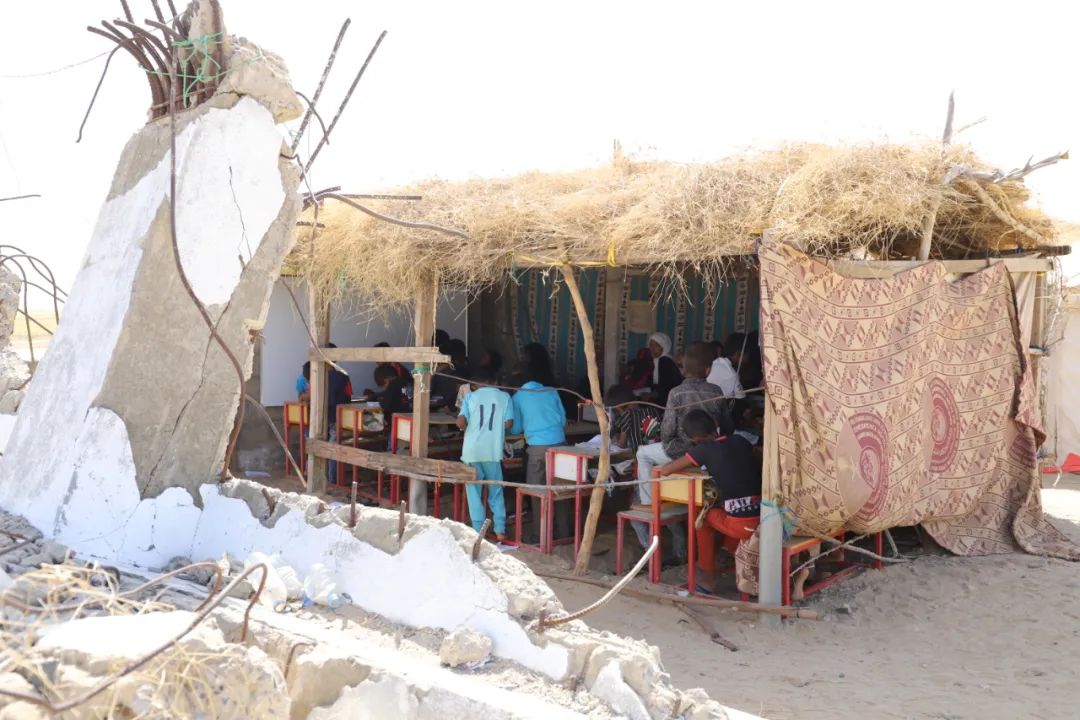Yemen Schools During Pandemic For them classrooms may be tents or wooden houses thatched sheds big trees
November 20th is World Children’s Day. This year, the theme set up by UNICEF is “Redraw the Dreams of Tomorrow and Light Up the Future of Children”.
Education is an effective way to realize dreams and light up the future. However, not all children in all regions have a good education environment.
For children in the Midi district of Hajj province in northwest Yemen, the classroom may be a tent, a leaky wooden house, a thatched shed, or even just a big tree.
After many years of war, all 15 schools in the Midi area were left in ruins. In recent months, the fighting has stopped a bit. In order to allow children who have been out of school for many years to return to school, locals have begun to rebuild the school.
“Last month, we built 8 classrooms with thatch and old wood. The children can now go back to school.” Hassan Jabashi, the parent of the children, told Xinhua News Agency recently.

Jabahi’s children go to Ali Bin Abi Talibu School. In 2018, a howitzer attack completely destroyed the school. He and other students’ parents helped set up temporary classrooms. Now more than 280 students in the school are in temporary classrooms.
Jabashi said that there are not enough desks and chairs in the school. “The double desks are crowded with three children, and the students can only sit on the ground and listen to the class.” The students huddled together, and the teacher could only squat down and write on the low whiteboard.
According to United Nations data, the Yemeni civil war damaged or destroyed more than 2,500 schools and forced 2 million children out of school.

These “hut classrooms” were built beside the ruins of the previous school. The cement fragments all over the floor and the exposed steel bars always remind people of the tragic war. However, children like to run into the ruins to play during the break, as if this place is just an adventure park.
Parents and teachers are not as carefree as children. In addition to the war, the Coronavirus Pandemic has also brought great challenges to local schools and students.

Yemen reported its first confirmed case of Coronavirus on April 10. According to the latest data, government-controlled areas have reported a total of 2073 confirmed cases and a total of 605 deaths. In the Houthi armed control area, a total of 4 confirmed cases and 1 death.
Although Yemen reported the Pandemic late in the Middle East, its Coronavirus death rate has been between 25% and 30%, one of the highest in the world. Years of war have caused Yemen’s economy to be sluggish and the medical system is on the verge of collapse. People cannot afford or buy protective equipment such as masks.

Speaking of the difficulties of running a school, the principal Abdullah Mutanbek said that the school urgently needs various teaching facilities, but the bigger problem is the lack of teachers.
“Due to the war, many teachers have become refugees. After leaving here, the remaining teachers have not been paid for five years.” Mutanbek said.
A recent UN statement stated that teachers in many public schools in Yemen have not been paid since the outbreak of the civil war. In order to make ends meet, many teachers have to change careers.
Mutanbek said: “Our education has been suspended for a long time due to the war. This has led to a soaring illiteracy rate. There are many teenagers who are still illiterate. “
The Chief Executive of Midi District Ali Siraj said that other schools, like the Talibu school, resume teaching by building temporary simple classrooms.
The class bell rang, and the children returned to the straw shed classroom. The loud reading sound came from the straw shed and echoed in the ruins.



